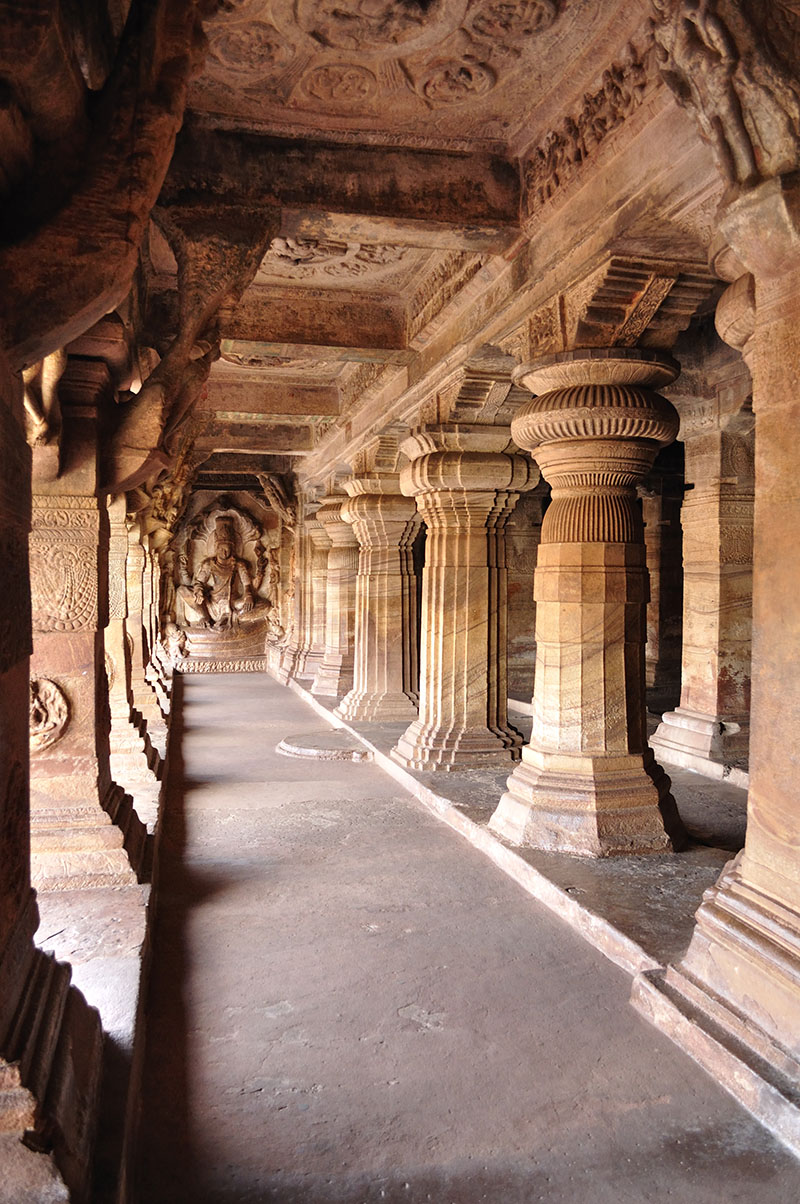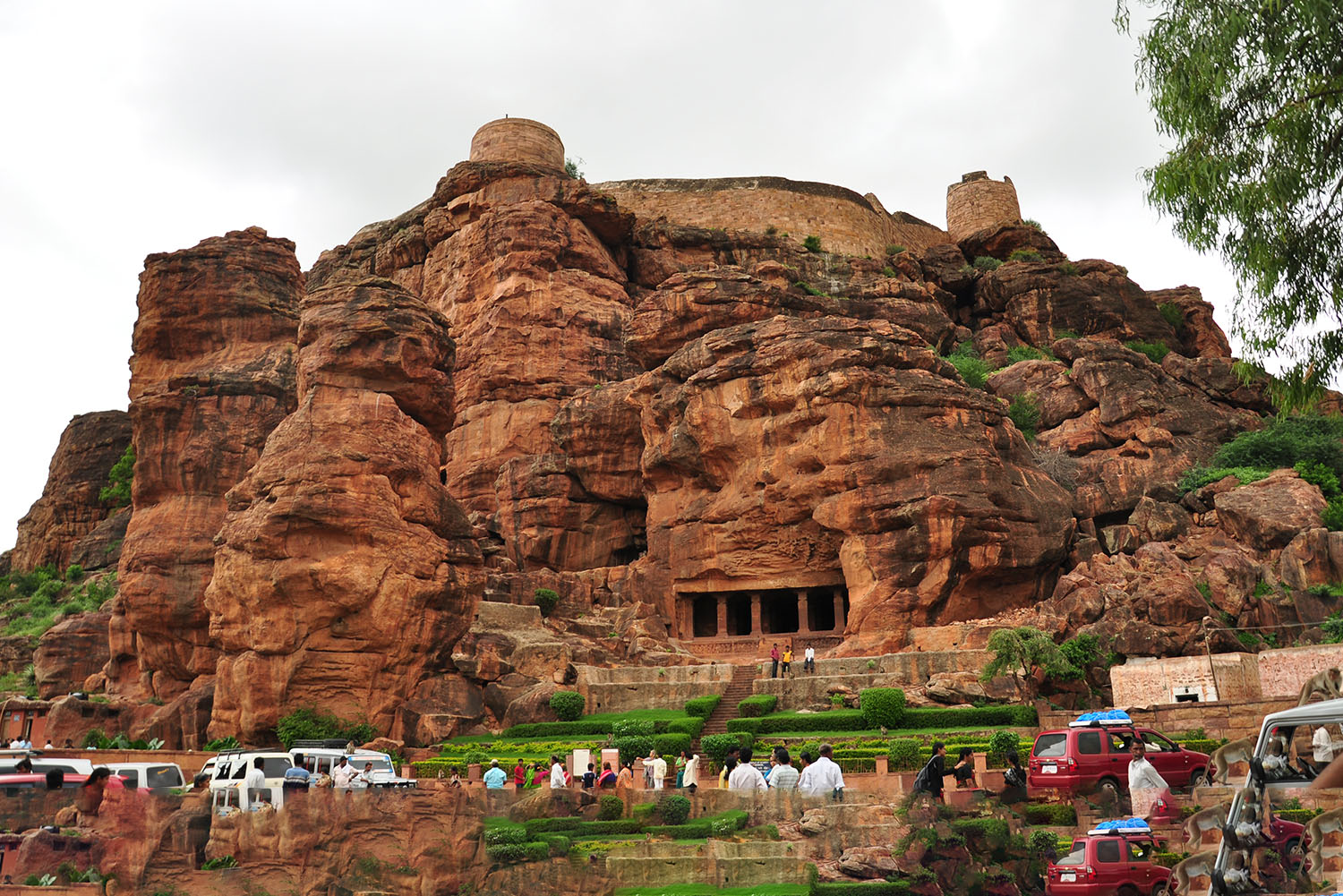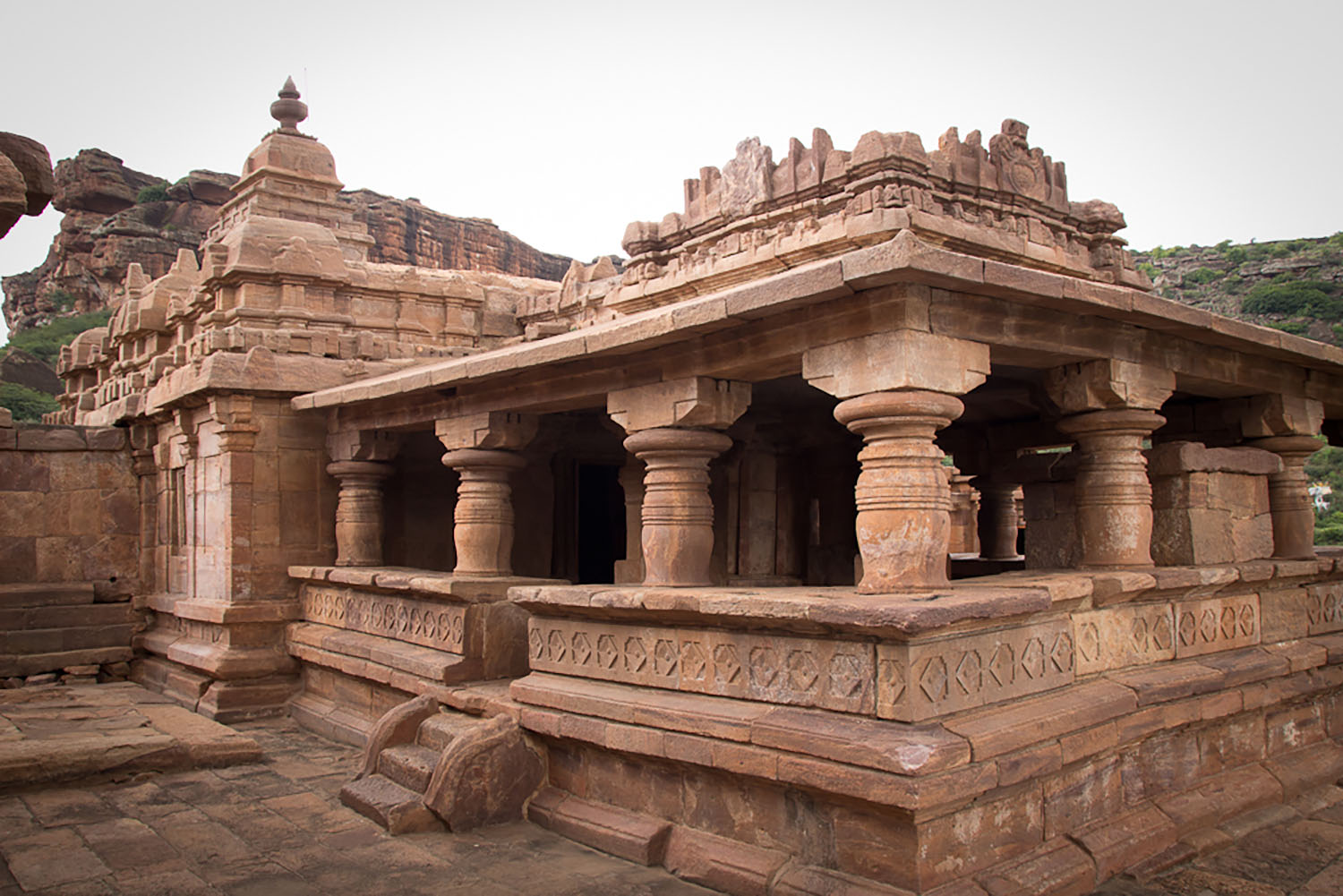A group of four rock-cut sandstone Shaivite, Vaishnavite and Jain shrines, the Badami cave temples are located in and named after the town of Badami in the Bagalkot district of northern Karnataka. Dating to the second half of the sixth century CE, they are among the earliest surviving monuments of the Early Western Chalukyas. Previously known as Vatapi (or Vatapipuri), Badami was a Chalukya capital, citadel, and cosmopolitan centre, nestled in a valley between two branches of the Kaladgi basin. The cave temples were carved into the cliff face of the southern branch of this basin, facing the Agasthya Teertha artificial lake, constructed around the same time.
The sculptures and carvings at Badami are modelled with considerable detail, taking advantage of the versatility of the sandstone. Scholars have suggested that the aesthetic tastes of the patrons and sculptors of these caves contributed to the development of a uniquely Deccan architectural vocabulary, which would come to characterise the temple landscape of the south-western Deccan. The Badami cave temples are also characterised by the presence of early Nagara and Dravida architectural forms, which would be further developed in the architecture of the Pattadakal temple group. Scholars have noted that architectural, sculptural and iconographic elements from various religious sects appear to commingle and interact in the caves, attesting to a highly diverse and multicultural class of patrons and artisans.
The caves are numbered according to their position and elevation on the cliff formation and their distance from the town, with Cave 1 being the lowest and closest to the town and Cave 4 being the highest and furthest away. Due to variations in style and structure, some scholars have suggested that this arrangement corresponds to the sequence in which the caves were excavated and carved. The first three caves are dedicated to Hindu deities, while the last is to Jinas and associated figures. The iconography of the caves is characterised by syncretism and pluralism; many motifs appear to have been used by artisans and patrons irrespective of religious denomination. A small, grotto-like space was found during early investigations of the temple group and considered a separate cave, but it has since been excluded from the grouping.









